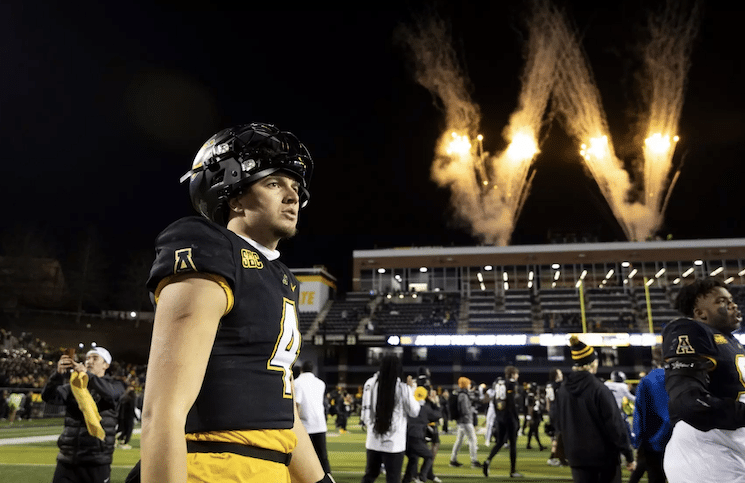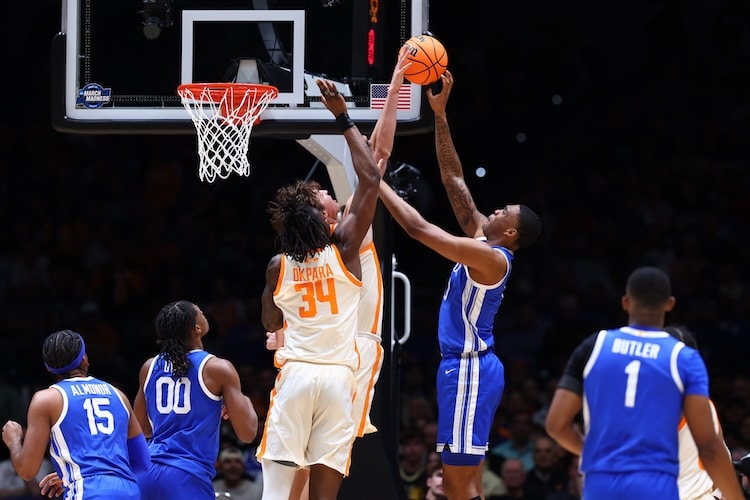
Tennessee’s pass defense has improved steadily as the season has gone on, and the Vols’ secondary has gone from an inconsistent group to a more reliable bunch. But Tennessee hasn’t faced a passing attack like Indiana’s in several weeks.
Indiana comes into their match-up with the Vols in the TaxSlayer Gator Bowl with one of the best statistical passing offenses in the country. The Hoosiers are averaging 308.7 passing yards a game, which ranks 14th in the entire country and second behind only Purdue in the Big Ten. Their 24 passing touchdowns are tied with several teams for 36th in the FBS, and their overall QB rating of 153.84 ranks 21st.
The Hoosiers have thrown for 300 or more yards in six of the 12 games they’ve played, and they’ve eclipsed the 250-yard mark through the air in all but two games. And they’ve done all that while having to switch quarterbacks due to injury.
Redshirt freshman Michael Penix Jr., who was once committed to Tennessee, began the season as Indiana’s starting quarterback. But injuries sidelined him briefly, then he suffered a season-ending injury to his collarbone. Veteran Peyton Ramsey filled in as starter and took over the reins of Indiana’s offense, and the Hoosiers didn’t miss a beat.
Penix threw for 1,394 yards, 10 touchdowns, and four interceptions in six games. Ramsey has thrown for 2,227 yards, 13 touchdowns, and four interceptions in 10 games.
Indiana boasts an impressive receiving corps, too. Whop Philyor has hauled in 69 catches for 1,001 yards and five scores on the season. Not only that, but the Hoosiers have three other pass catchers who have over 500 receiving yards this season, and six players on IU’s roster have 22 or more receptions.
For comparison, Tennessee has just two receivers on their roster with 500 or more yards and only four players with 20 or more catches.
The Vols haven’t faced a passing offense with this type of firepower — on paper — since taking on teams like Alabama and Florida back in mid-October and late September. The Tide averaged 343.5 passing yards a game while the Gators averaged 300.4.
Against those teams, Tennessee struggled, giving up 313 yards, two touchdowns, and two interceptions to Florida and 233 yards, a touchdown, and an interception against Alabama’s backup quarterback for most of the game.
But the Vols have improved since then. Quite a bit, in fact.
Over their last four games, the Vols are only giving up 137.3 yards per game through the air and have the same amount of interceptions (4) as passing touchdowns allowed (4).

Granted, Tennessee hasn’t exactly faced a slew of passing juggernauts down the stretch in UAB, Kentucky, Missouri, and Vanderbilt, but it’s not like Indiana has faced a daunting schedule themselves.
Tennessee’s passing defense ranks 16th in the FBS in yards allowed per game (191.3). The Hoosiers have only faced two defenses with better numbers than that this season, losing both (Ohio State, Michigan). Northwestern compares favorably to the Vols in pass defense, giving up 198.8 yards a game. Indiana beat them 34-3 and passed for 270 yards and a touchdown.
But Northwestern was also a 3-9 football team. Tennessee is 7-5 and is on a five-game winning streak.
The Vols will be only the sixth team ranked inside the top 50 in the FBS in pass defense that Indiana has faced all season. The Hoosiers are 2-3 in the previous five games against those teams and have averaged 269.2 passing yards a game in those contests.
Indiana’s other six FBS opponents on their schedule this season rank 77th in the country or worse in pass defense. The Hoosiers have faced five teams that rank 95th or worse in pass defense this season.
Against those six teams, Indiana went 5-1 and averaged 319.5 passing yards.
Numbers in a void don’t tell the whole story, and that’s true for both the Vols and Hoosiers. On paper, Indiana’s passing offense looks like one of the best in the country. On paper, Tennessee’s pass defense looks like one of the best in the country.
The reality? Both have been able to pad their stats against weaker teams at points this season. But both IU’s passing attack and UT’s passing defense are still good, and that will be the biggest match-up of the game.
Tennessee has given up less than 250 passing yards in nine of their 12 games this season. Indiana has thrown for 250 or more yards in 10 of their 12 games. Something has to give, and whoever wins the battle through the air when the Hoosiers are on offense will likely win the game.




